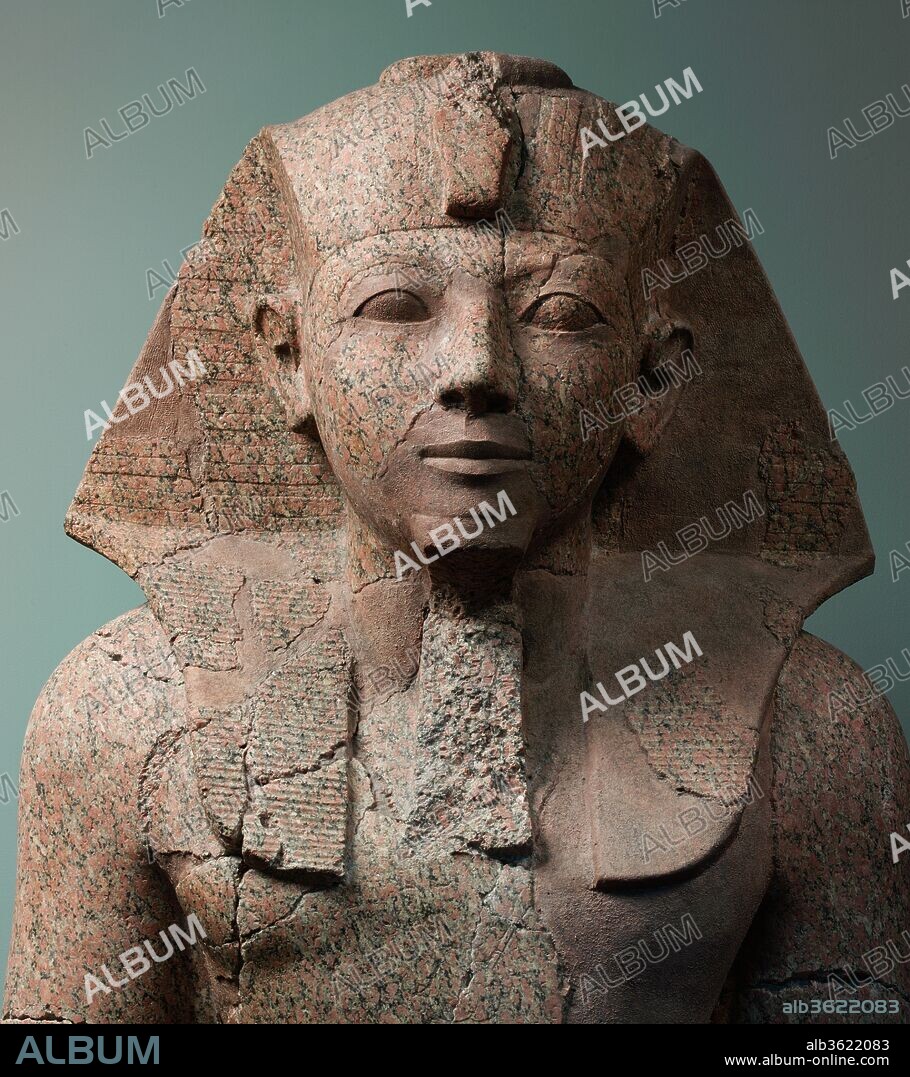alb3622083
Large kneeling statue of Hatshepsut

|
Ajouter à une autre Lightbox |
|
Ajouter à une autre Lightbox |



Avez-vous déjà un compte? S'identifier
Vous n'avez pas de compte ? S'inscrire
Acheter cette image.
Sélectionnez l'usage:

Titre:
Large kneeling statue of Hatshepsut
Légende:
Voir la traduction automatique
Large Kneeling Statue of Hatshepsut. Dimensions: H. 295.9 cm (116 1/2 in); w. 82.6 cm (32 1/2 in); d. 149.9 cm (59 in). Dynasty: Dynasty 18. Reign: Joint reign of Hatshepsut and Thutmose III. Date: ca. 1479-1458 B.C..
This over life-size kneeling statue and two others in the collection (29.3.1 and 30.3.1) were made to flank the processional pathway along the axis of Hatshepsut's temple at Deir el-Bahri. They depict Hatshepsut as the ideal Egyptian king - a young man in the prime of life. Each statue has an inscription that includes her personal name, Hatshepsut (literally foremost of noblewomen) and/or a feminine pronoun or verb form, so the masculine garb and physique were not intended to trick people into thinking that she was a man.
Although traditionally the Egyptian throne passed from father to son, when the necessity arose, a female ruler was accepted. However, the trappings and symbolism associated with kingship were overwhelmingly masculine and the sculptors of this statue were following a tradition that extended back more than fifteen hundred years. In this tradition, the public image of the king, whether he was an infant, a frail old man or, in this case, a woman, was shown in the most powerful and imposing form - a young, vigorous man, or a human-headed lion-bodied sphinx (31.3.166). In this statue, Hatshesut wears the nemes-headcloth, false beard, and shendyt-kilt that are part of the standard regalia of the king.
Technique/matériel:
granite
Période:
NEW KINGDOM
Musée:
Metropolitan Museum of Art, New York, USA
Crédit:
Album
Autorisations:
Taille de l'image:
3732 x 4200 px | 44.8 MB
Taille d'impression:
31.6 x 35.6 cm | 12.4 x 14.0 in (300 dpi)
 Pinterest
Pinterest Twitter
Twitter Facebook
Facebook Copier le lien
Copier le lien Email
Email
